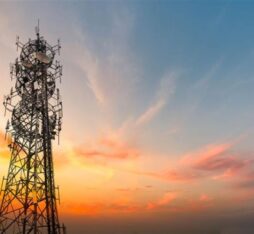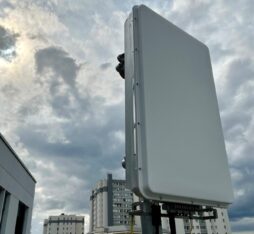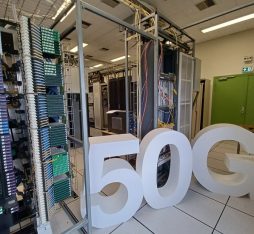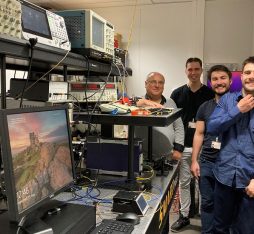• This approach is part of a global rationale of sustainability.
• Research Program Manager Marie-Hélène Hamon discusses the dynamics of innovation in mobile network technologies, the importance of societal dialogue and some of the expected technical developments.
Major breakthroughs in software, cloud and artificial intelligence technologies, among others, will significantly accelerate telecommunications innovation in the years to come. Orange and its partners are actively working to shape the future of telecommunications through research, standardization and open-source communities — all so that networks deliver sustainable value for our customers and society at large.
Networks for 2030–2040 must be designed to bring sustainable value to society.
As 5G continues to evolve, the telecommunications ecosystem is preparing for the standardization of mobile network technology by 2030–2040, commonly known as 6G. The imminent standardization phase will be crucial to defining a common technology on a global scale — one that is interoperable between different devices from different providers. The first 3GPP workshop on use cases beyond 2030, in May 2024, ushers in this period of intense discussion. On this occasion, Orange showcases the Group’s vision for the mobile networks of tomorrow with a White Paper on Mobile Networks Technology Evolutions Beyond 2030. The document highlights the goal of providing value and supporting sustainability, while questioning the relevance of the “6G” label.
A Paradigm Shift
Ever since 2G was launched in 1991, players in the mobile network ecosystem have taken to referring to the next “generation” with every major evolution in the technology, every ten years on average. But 5G has changed the game. “We now prefer to avoid this nomenclature because we foresee a more gradual and continuous evolution in the future, rather than a profound technological breakthrough every ten years,” explains Marie-Hélène Hamon, Research Program Manager at Orange. “What’s more, up to and including 4G, new generations of mobile networks were accompanied by the advent of new types of services such as Internet access on mobile devices becoming widespread with 3G, the use of video with 4G, etc. 5G has ushered in major advances, especially in supporting traffic growth while improving energy efficiency, and of course higher speeds. And the 5G standalone currently being rolled out will offer features for controlling latency and service quality in general, which will be very useful for industrial purposes for example. However, these improvements are not always visible to the individual consumer, who predominantly streams videos and uses social networks. This can lead to misunderstandings about the merits of the next generation.”
Continuous Technological Innovation
While it may be tempting to hold on to well-established terminology, the reality is that this vocabulary no longer matches the way networks are changing. “The current naming convention suggests that little to nothing happens between two major developments. But this is not the case,” continues Marie-Hélène Hamon. “The 3GPP works with updates and new versions that are defined in cycles of 18 to 21 months. It’s more of a gradual and continuous evolution, not a sudden leap every ten years toward a totally different technology.” This ongoing evolution must focus on innovations that improve network sustainability and on new services that will deliver value to users.
Societal Dialogue
To identify users’ needs and expectations, there needs to be dialogue with the society stakeholders. This approach takes us in a new direction, and should be generalized in the telecoms ecosystem. Until now, mobile network technologies have been designed by telecoms players, and “must evolve toward transformation driven by customer needs and expectations for the 2030–2040 timeframe.” How? By involving them directly in the study phase. “Orange Innovation already uses this method, through workshops organized in different cities, in order to identify user expectations and constraints, for both businesses and individuals.” Orange is also developing this approach with the partners of the Hexa-X-II European project.
Environmental, Social and Economic Sustainability
This reflection on societal dialogue contributes to work on the sustainability of future networks technology. The white paper argues that this sustainability should be one of the main objectives guiding their design. It must be divided into environmental, social and economic themes.
The white paper insists that environmental aspects must be taken into account in upcoming standardization work. The future will be about trying to do more with less. “5G is highly scalable. We can therefore integrate innovations without altering its technical foundations, while software network function developments help extend equipment lifespans,” says Marie-Hélène Hamon. In concrete terms, this means prioritizing software updates over hardware changes, which should only be resorted to when the benefits justify the impacts of these changes, especially from the environmental perspective. “To achieve our environmental goals, we must aim to save energy at every level as well as reducing our carbon footprint. This includes limiting the need for new equipment.”
Meanwhile, social sustainability means that networks are inclusive, i.e. that they allow everyone to access digital services, guaranteeing the security and confidentiality of information, and making sure that this information can be restored quickly in the event of an outage, cyber attack or natural disaster. And lastly, economic sustainability refers to the economic viability of these networks.
Value Indicators
The notion of value must be central when defining the networks of the future. “New mechanisms must be defined to capture this notion of value, in addition to the criteria traditionally evaluated in technology specifications, such as speed and latency.”
Technical Innovation Serving Sustainability
From a technical point of view, cloud-native architectures and artificial intelligence will play an important role in the networks of the future, for example to optimize energy consumption or to improve resilience thanks to the ability to automatically transfer the service to another network node in the event of an outage. With their satellites and high-altitude platforms, Non-Terrestrial Networks (NTN) are one of the potential ways of addressing territorial inclusion issues.
New frequency bands are also considered, as mobile networks expand. “New opportunities have also opened up in bands between 6 and 15 GHz, which are slightly higher than the current bands, but much lower than some of the bands originally planned for 5G. They are particularly interesting because they allow current radio sites to be reused, by improving their capabilities.”
Many avenues are being considered to help the mobile sector of the future to support changes in use, in particular increases in traffic, while lowering greenhouse gas emissions, which Orange believes needs to be one of the main objectives of the upcoming standardization.
 Marie-Hélène Hamon
Marie-Hélène Hamon













